Book Review: Basic Black by Sato Watanbe
/Hey y’all, its Jackie. I come from a long line of seamstresses. My grandmother taught Home Ec. as one of her many careers in the 50’s and 60’s. She and her mother taught my mother and aunts to sew. As a result, my mother won her Singer sewing machine in a national sewing contest as a pre-teen. I grew up to the hum of that sewing machine. I dabbled growing up, but I didn’t fall in love with sewing until I graduated college and needed professional clothes that would cover my long legs and arms and my Mama didn’t live close enough to make them for me. That was close to 20 years ago. When you’ve been sewing for that long, you reach a point when you crave a personal sewing challenge. About that same time, Tuttle Publishing offered the Pattern Revolution team chance to review a sewing book from their catalogue, and you better believe I jumped on the challenge.
It took some effort to narrow the options down and choose just one book, but ultimately I chose Basic Black by Soto Watanabe. I really responded to the seaming and angles within the patterns included in the book. Once the book arrived, I thoroughly enjoyed flipping through it. The layout is truly beautiful! As Nina Garcia would say, it’s “very editorial.” The first half of the book shows modeled photos of each pattern. Even though all the items are in black - that is the name of the book, after all - it’s clear that these are well tailored patterns. The instructions for each of the patterns are in the second half of the book. They are easy to find and though sparse, they are easy to follow.
The “About This Book” section tells the reader that sizing is based on finished measurements rather than standard sizing notations. That sent me on a mini-research session about pattern ease. As a non-designer, it was enlightening. The 26 patterns fall into three categories - fitted, shaped, and loose. I am more of a fitted or shaped girl, so the Blocked Quilting Zip-up Jacket and the Asymmetrical Blouse with Tape Trim caught my eye. The pattern collection has a narrow size range (XS to L), which may cause many American seamstresses to balk. It could limit the sewing audience, but fortunately I fit within the size range. In both patterns I chose, I was a M at the bust and L at the hips. This is in keeping with most American Indie pattern sizing for me. There is a large pattern sheet in the back of the book, so I got to tracing. Many of the patterns share pattern pieces, which I like. Fit adjustments I made to one pattern can easily translate to another pattern. Once I traced off my pattern pieces, I added seam allowances, since the book specified they are not included. I chose to use a ⅜’ seam allowance and the hem allowance suggested in each pattern’s instructions.
So let’s take a closer look at the patterns I chose to sew. We’ll start with the Zip Up Jacket (pattern D), since it comes first in the book. Right off the bat, I added 5” to the sleeve length because I have Amazon arms. The construction was straight forward, and in no time at all I had a wearable muslin. Based on the muslin, I chose to taper the sleeve, narrowing it by ¾” on each side. I also learned I didn’t need all the extra ease I had accounted for when tracing the patterns, so I reduced the side seams. Taking out the excess ease meant I lost the in-seam pockets from my muslin, but by then I had concluded that I prefer my pockets to be placed more to the front than in the side seams. As a result, I drafted patch pockets for my final version. I cut my final version in a thinsulate material I found at Joanns. The completed jacket is a simple silhouette, but definitely has visual impact, and that is exactly my style. I’ve been wearing it for a couple days now, and I love it!
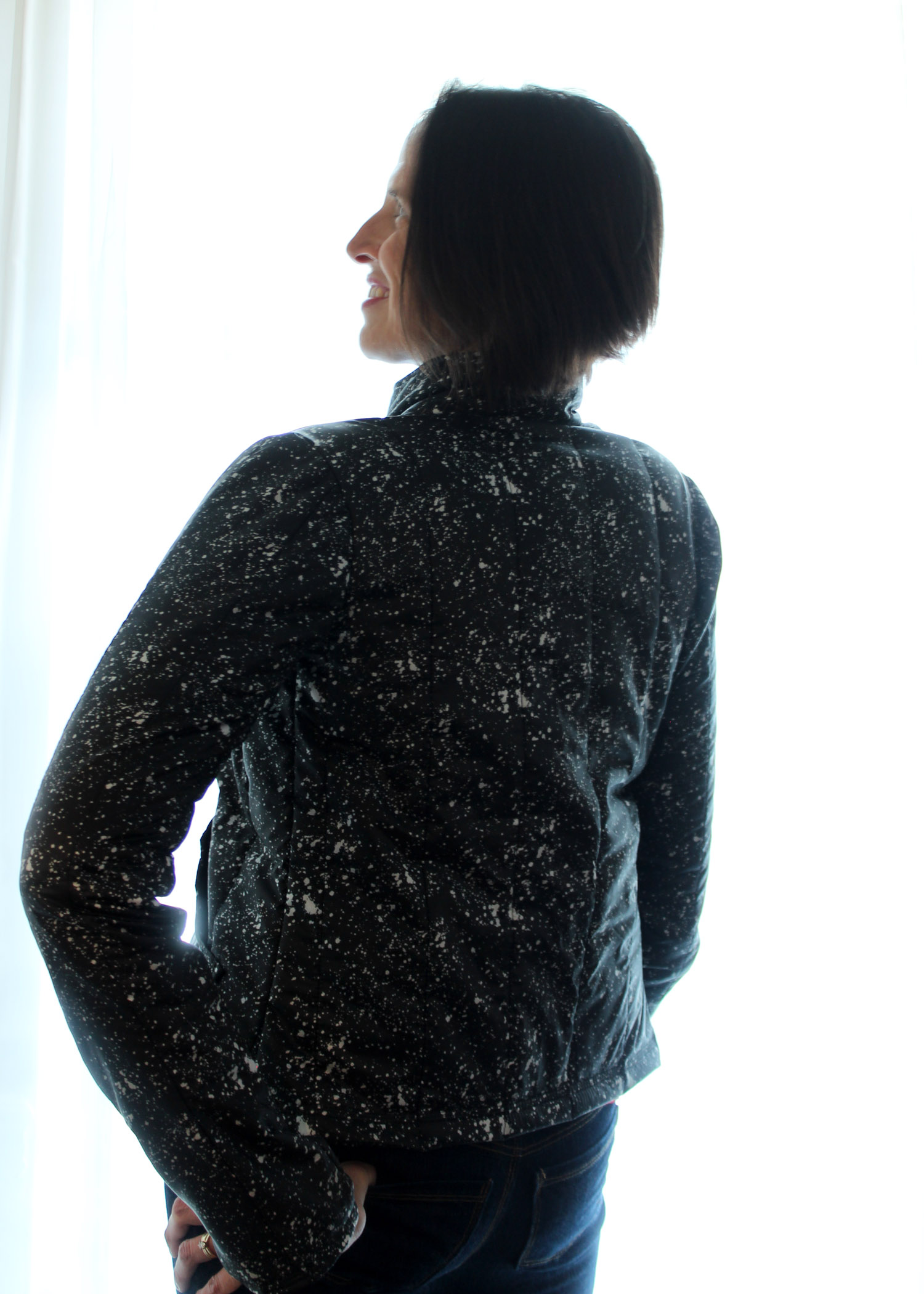
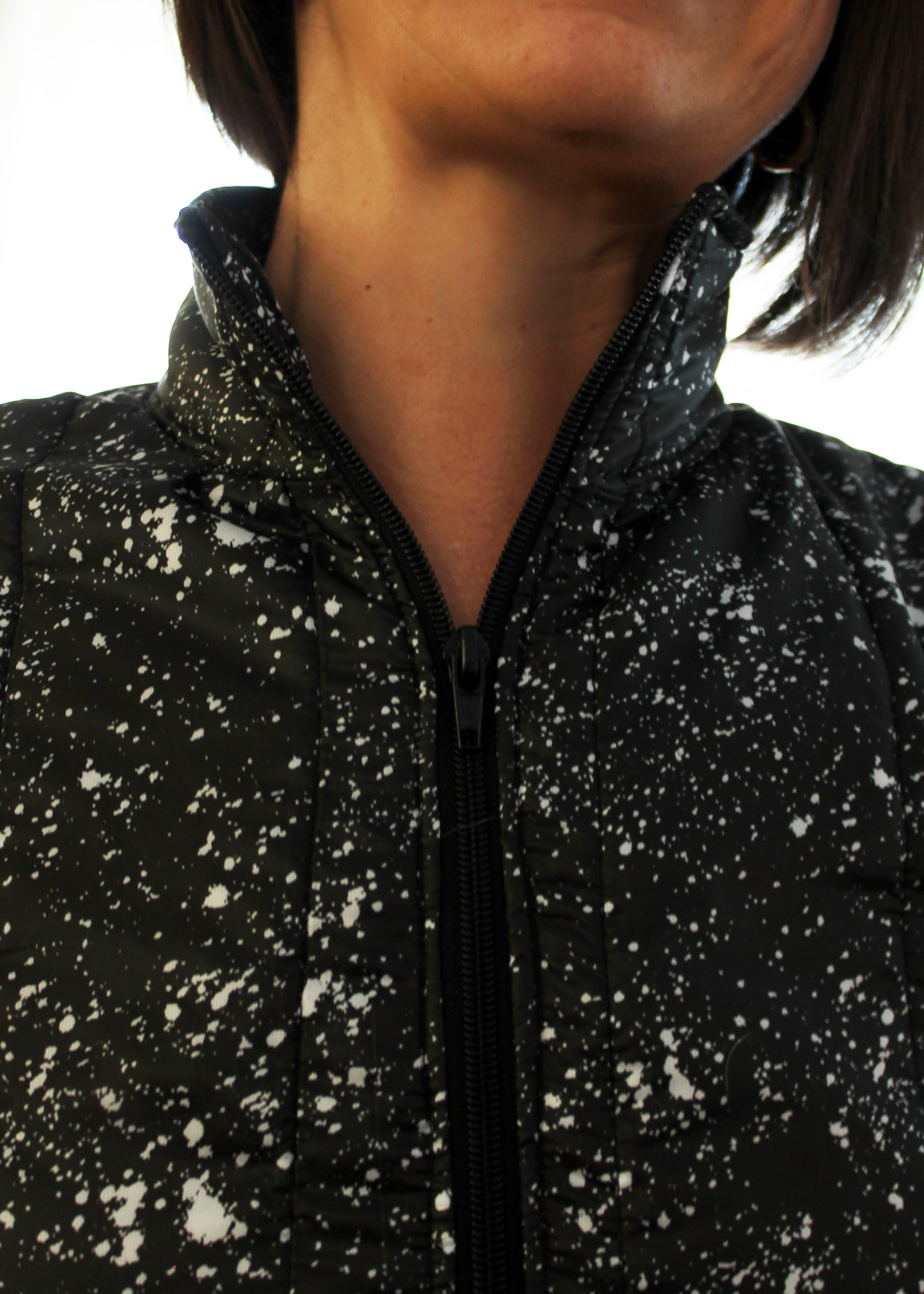


And now for the piece de resistance - the Asymmetrical Blouse with Tape Trim (pattern W). Have you ever seen a pattern and thought to yourself, “ I NEED that in my wardrobe!!” That was me with this blouse! The pattern shares the same sleeve as the jacket, so I already knew the fit was good there. I cut my muslin from a beautiful navy rayon challis and it came together and fit beautifully. Until I tried to attach the trim, that is. My first attempt was passable, but lacked the crisp corners that made me love the pattern. Since I needed to make a second one, I added 2” to the hem so that it would hit a little lower on my hip. Sadly, the fabric store no longer had the beautiful navy rayon in stock, so I opted for a black rayon. This time I laid out and pressed the angles in my bias trim prior to attaching it, and as a result I was able to achieve the sharp angles I loved. It’s hard to believe that three pattern pieces and a bit of trim can result in such a striking garment.
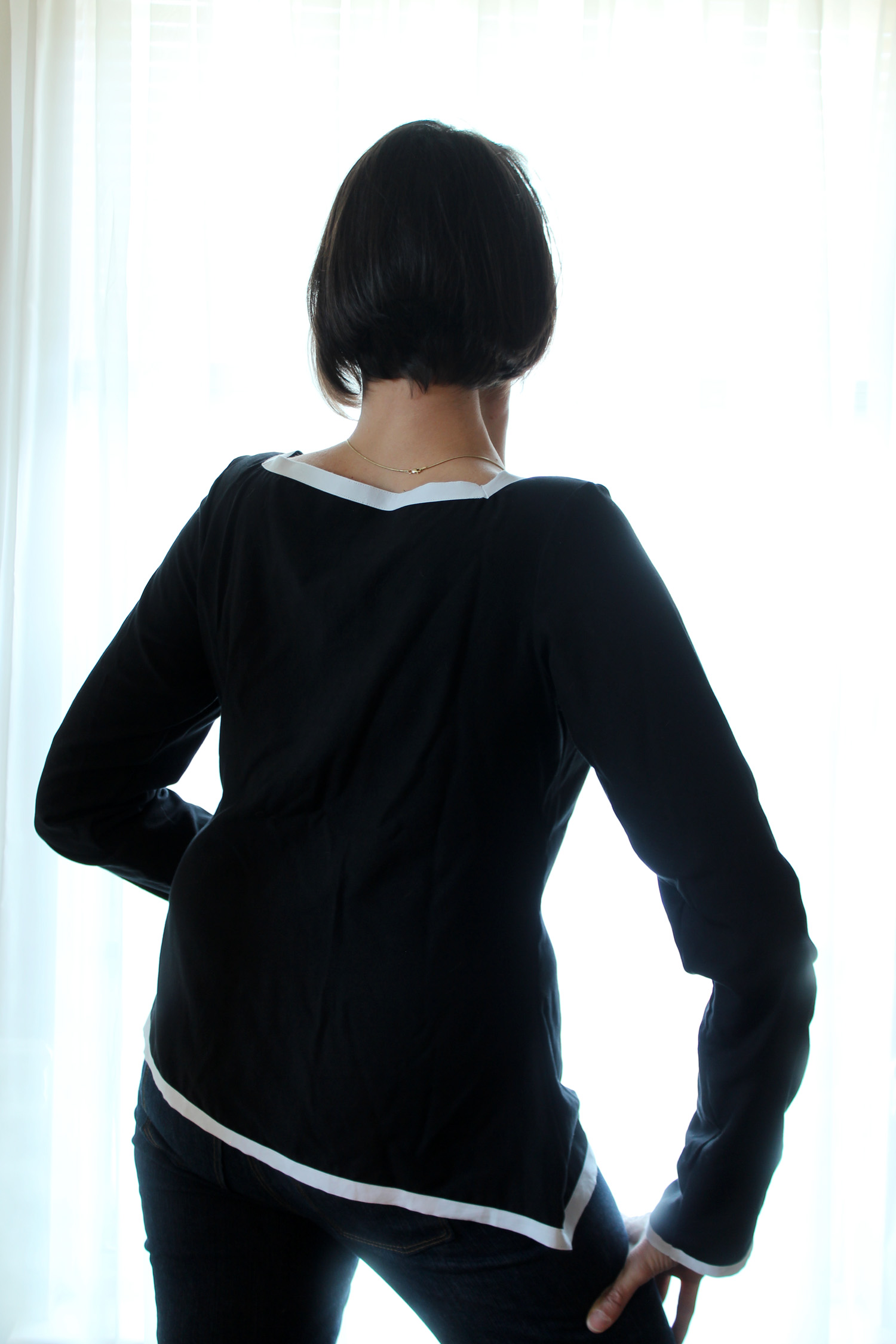
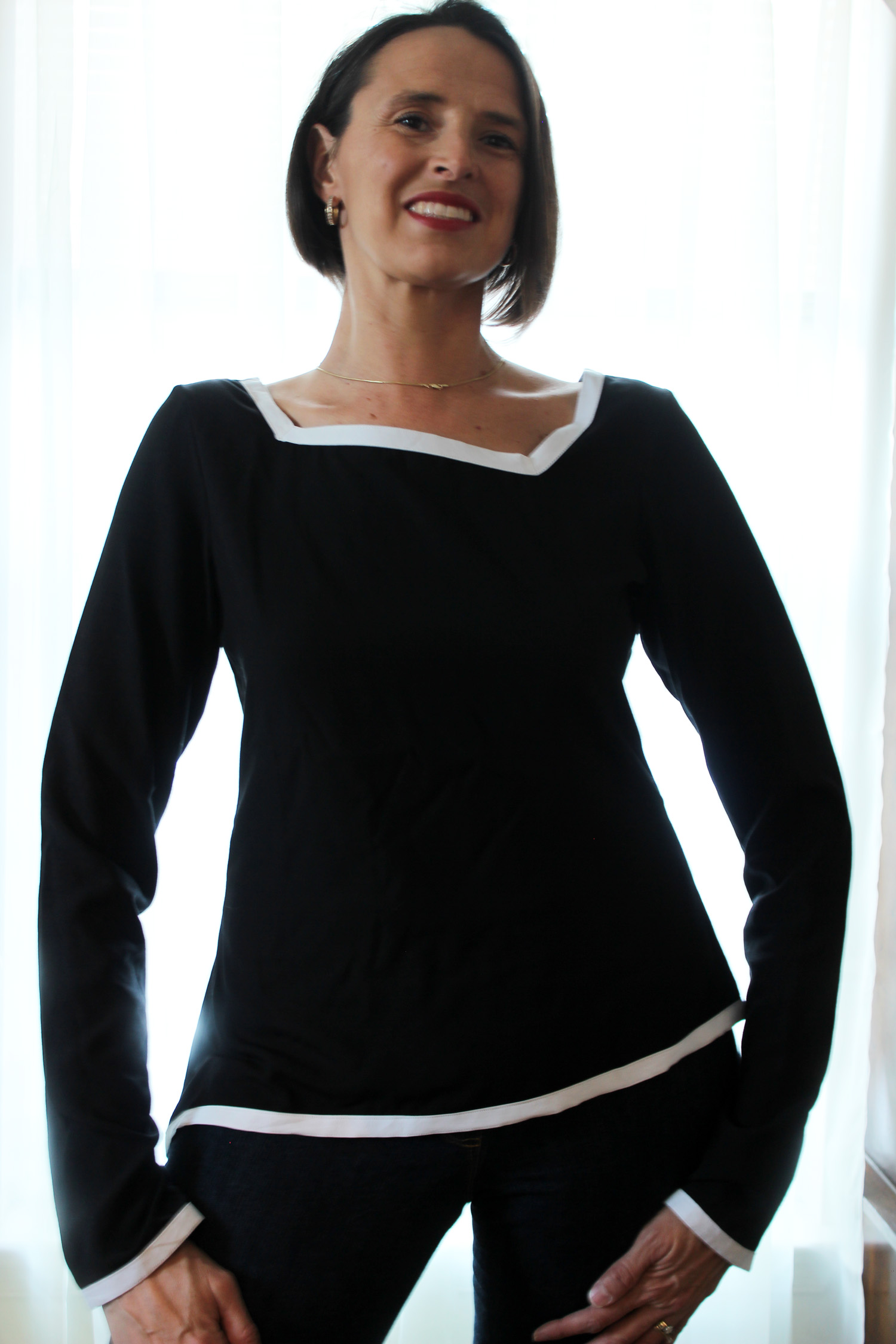
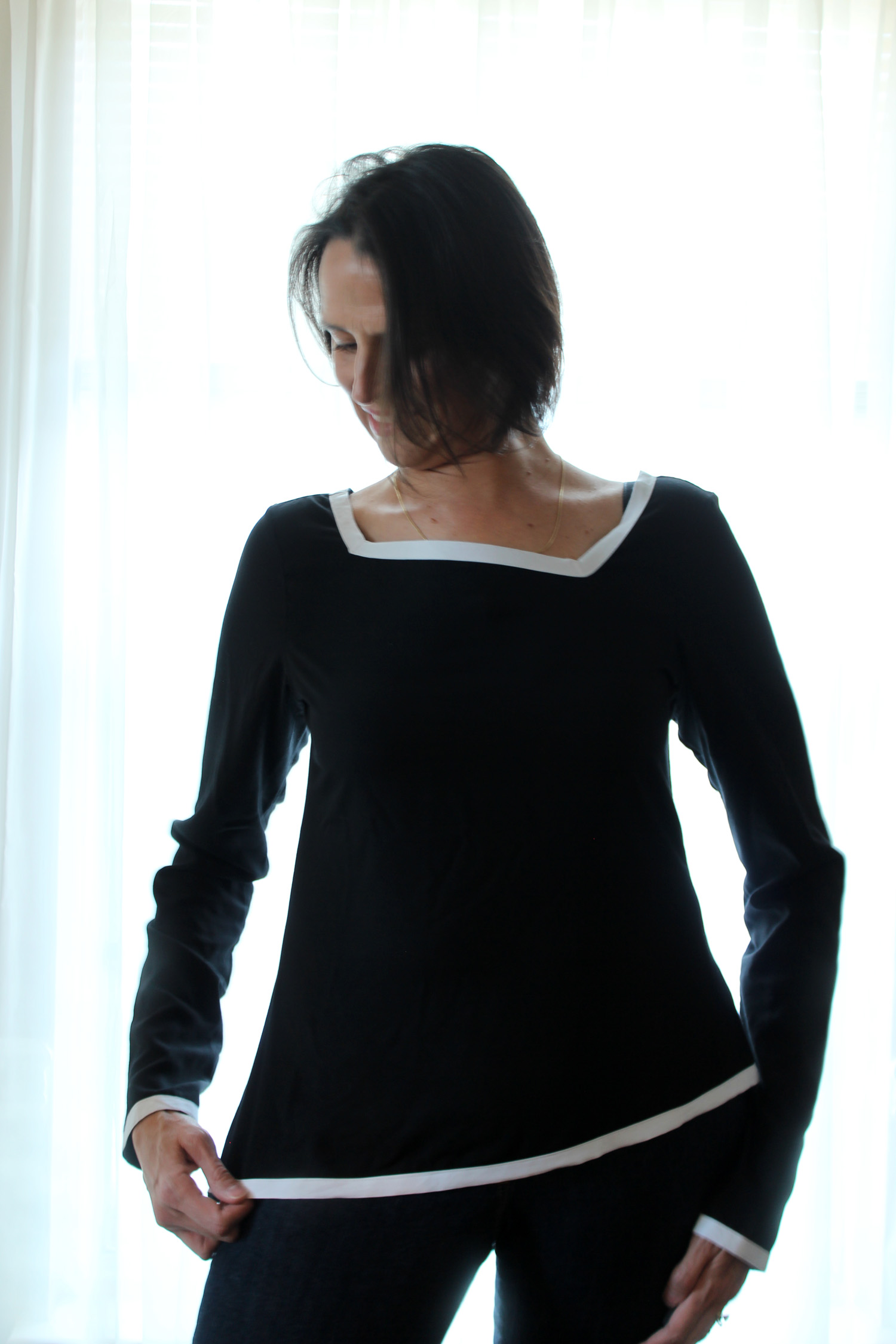
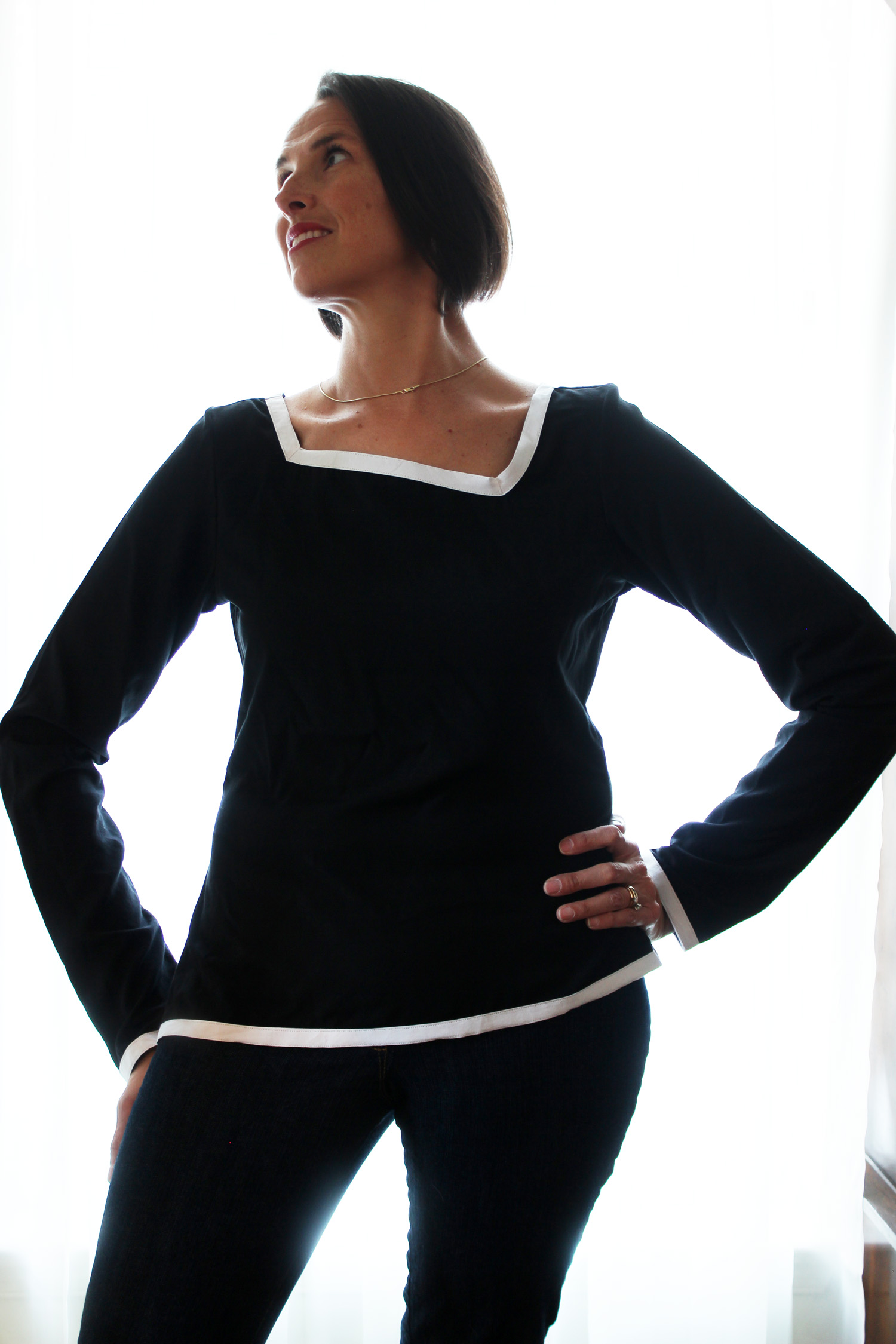
I normally gravitate to color, but I think the title of the book seeped into my subconscious because both of my final versions are black, However, I think you’ll agree with me that they are anything but “basic.” This book satisfied my desire for something challenging,new, and different. I was reminded of how small details can have a big impact. This book is written for seamstresses who have a confident grasp on our craft, so a novice might feel discouraged. But if you are game to push your capabilities, I really cannot say enough good things about the book and patterns it contains. Even though I’ve only shown you two patterns here, I have plans for a few more once the weather warms up and I’m not hidden under multiple layers.
Until next time,
Jackie
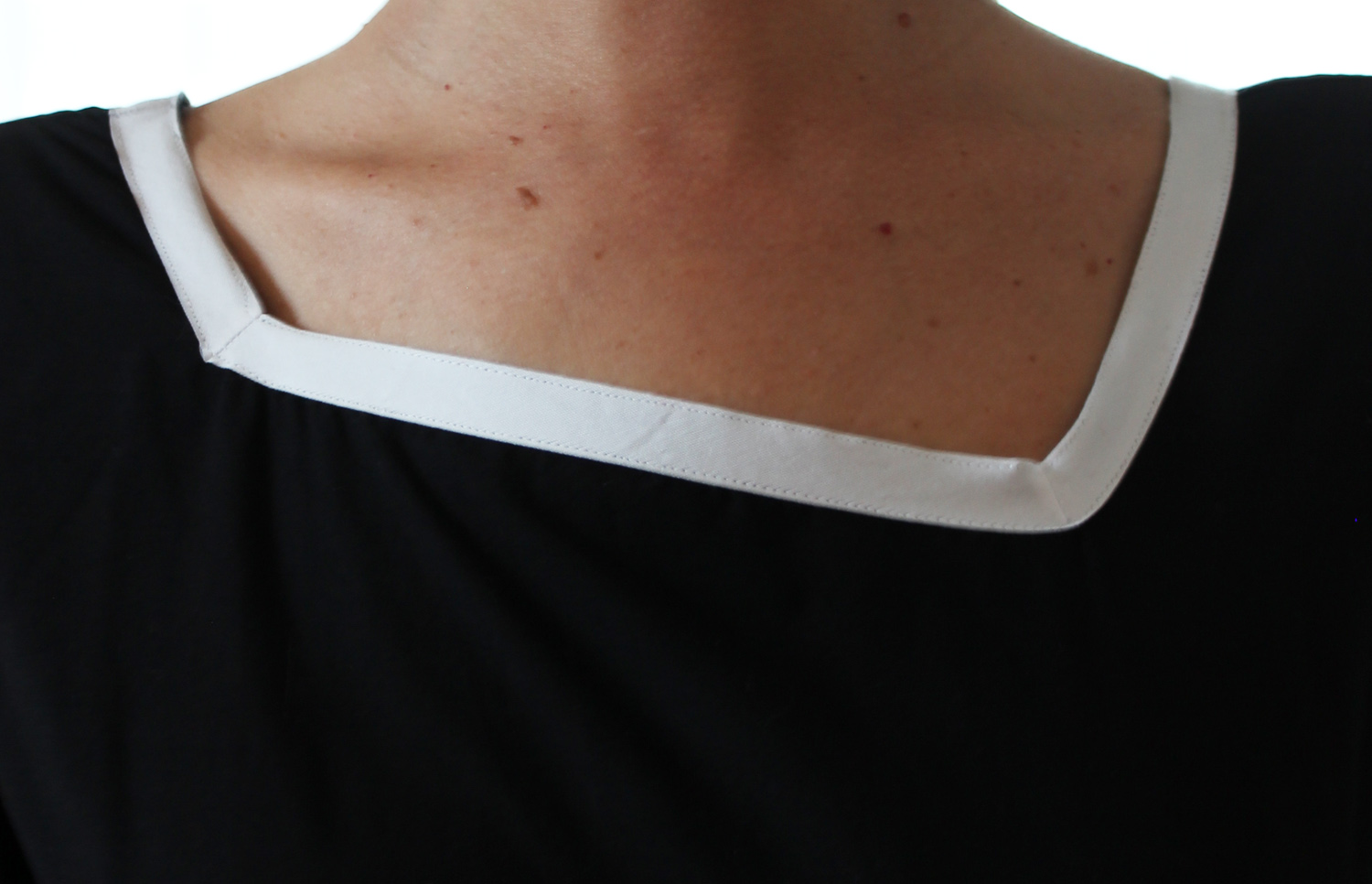

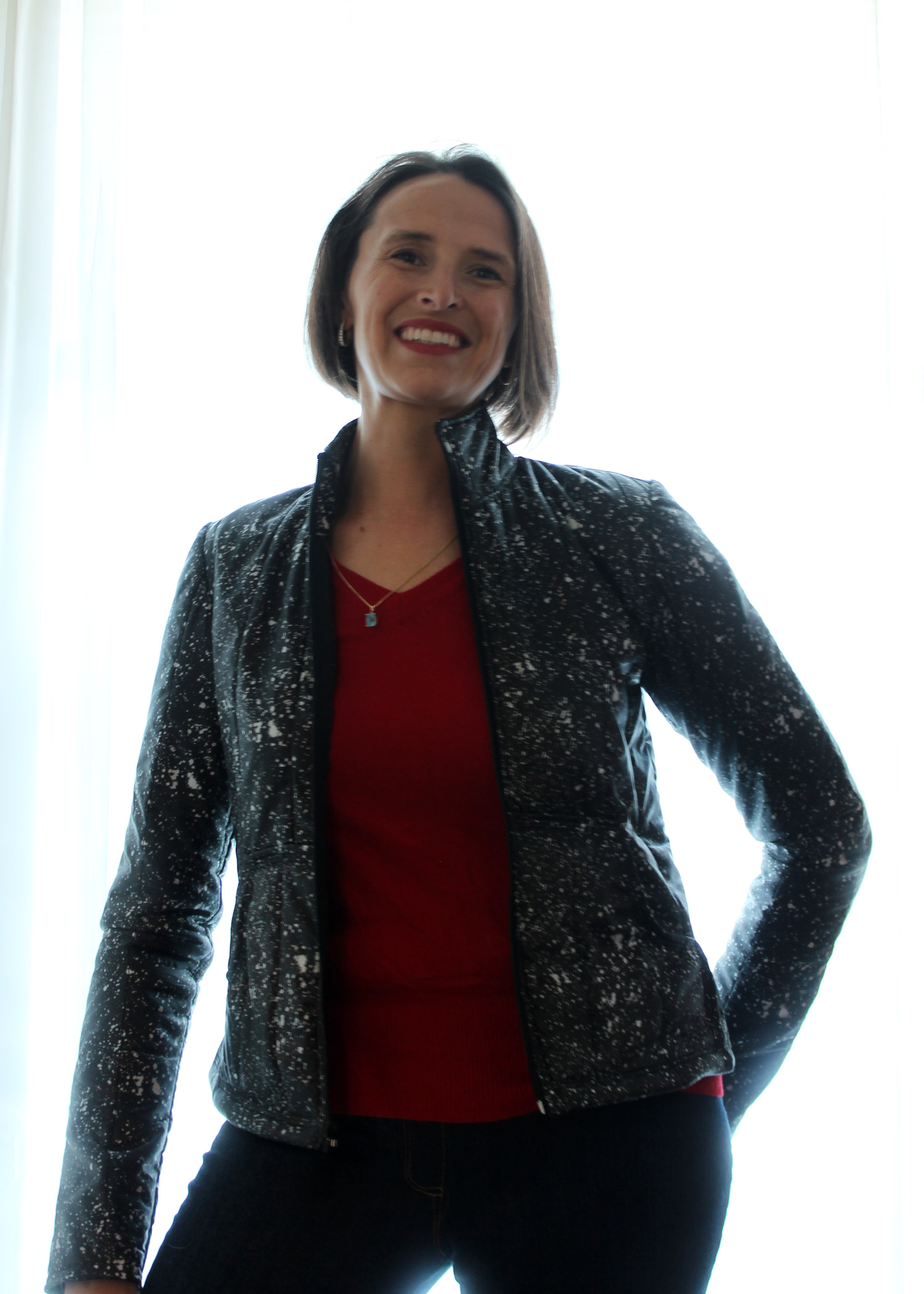

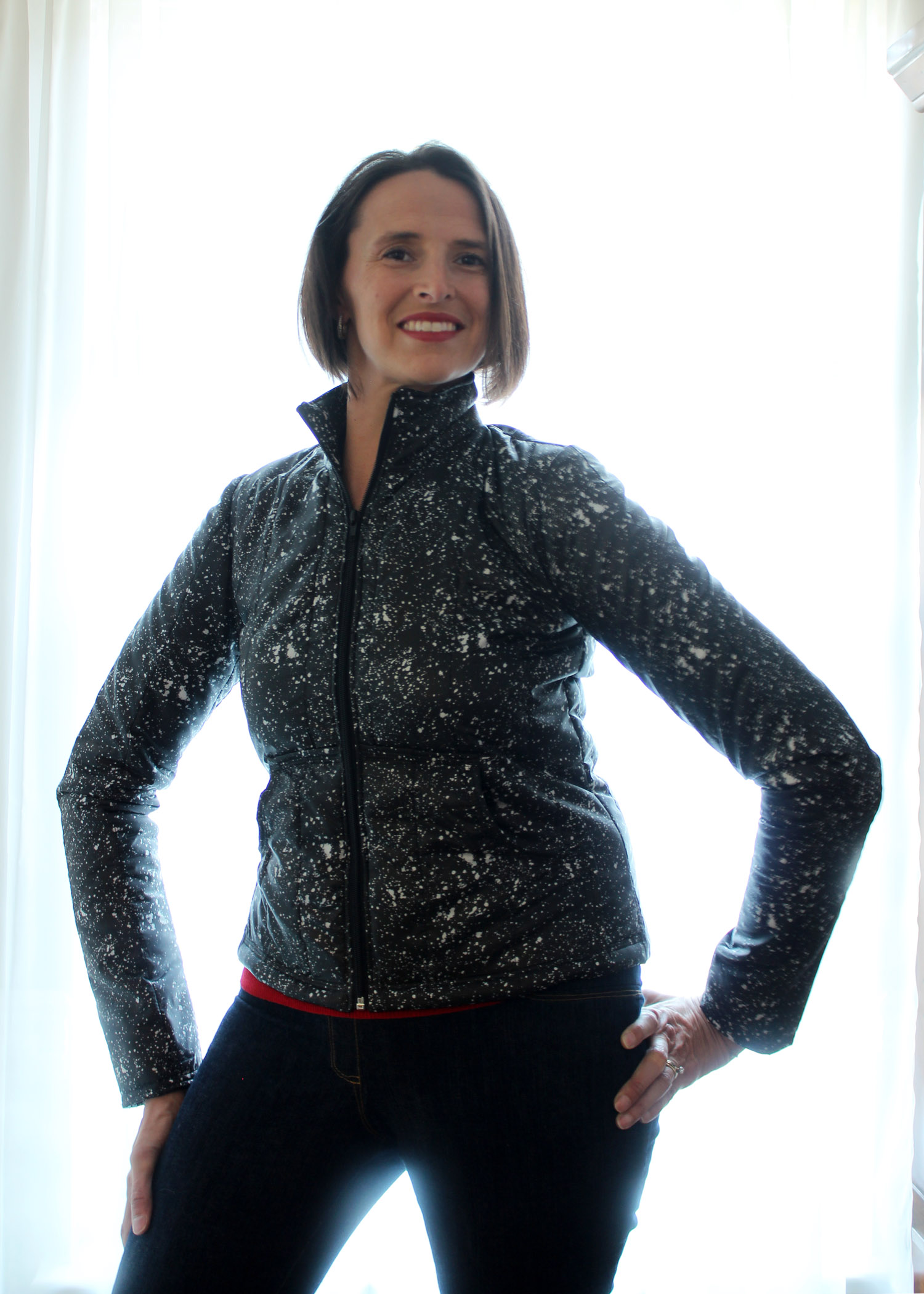


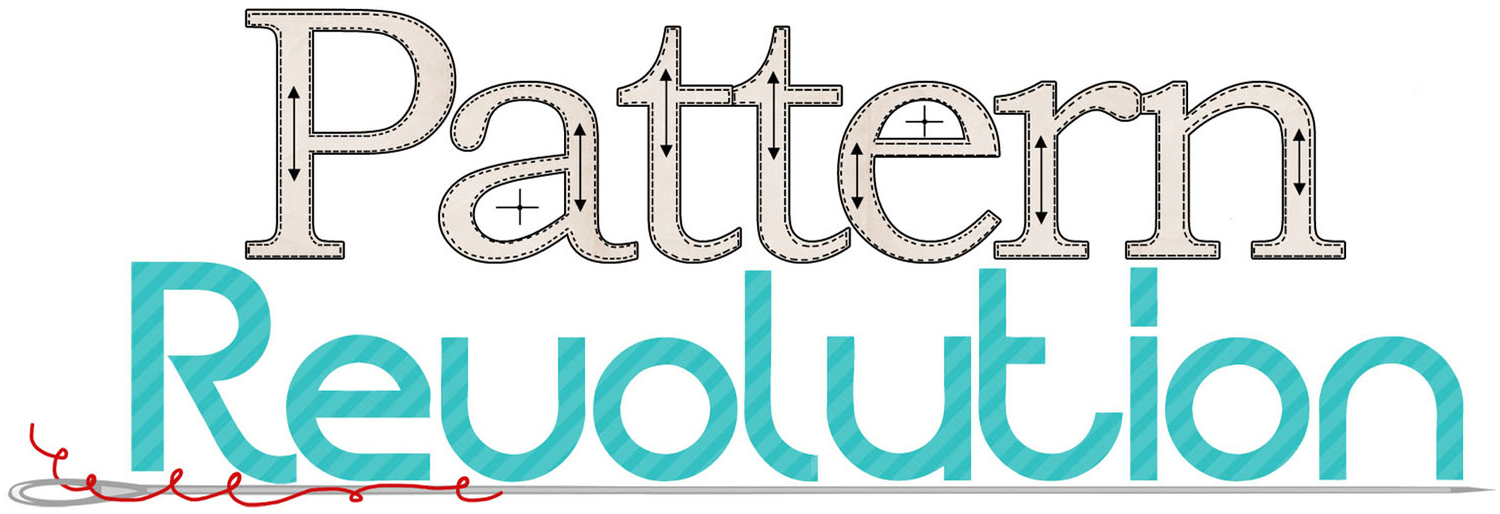













Today Jackie reviews the pattern book Basic Black by Sato Wantanbe. She chose two patterns to sew but given her love of those two, I'm sure she will be sewing more in the future.